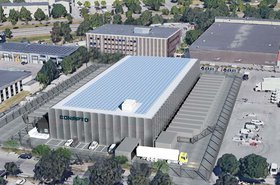It is interesting to see how we as human beings work, we tend to want to do the same as everyone else. For example, it’s easy to see how – and why – all the big shopping malls have been developed over time. Brands use each other to create a pull for shoppers and the sheer density of people ensures stores aren’t all competing for the same customer. It is a win-win situation, a gravitational syndrome that everyone benefits from.
It is the same with data, data storage and the people who deploy capacity. They tend to want to put the data in the same place as everyone else. Not because it is the best thing to do, but because becoming part of the local “community” is the easiest thing to do.
My dear friend and former colleague at Ingram Micro Sweden, Thomas Norrby once said, “If you are a CIO and buy IBM, you will never get fired”, and it may sound a bit off, but it has a lot of truth behind it.
The same goes for data center capacity. There are many good reasons why Frankfurt, London, Amsterdam, Paris, and Dublin (FLAP-D) have become the data center hubs of Europe. From the beginning it was probably the financial markets and latency that drove the expansions, but as technology develops this may not be the case anymore.
Is it cheap there? No. Is it green there? No. Will it be sustainable over time there? No, probably not. Will they run out of capacity? Probably, if not already. But still, companies continue to put their capacity there and these hubs continue to grow. The gravitational syndrome.
Stockholm is, in comparison to the FLAP-D markets, a smaller hub that incorporates brands like Equinix, Digital Realty, STACK, Conapto, atNorth, GlobalConnect and EcoDatacenter. At Conapto we are currently building 20 MW of new capacity with our Stockholm 4 South facility and we know that some of our colleagues are looking to do the same.
Is increased competition a bad thing for us? No, if we follow the principle of gravitational syndrome, it’s actually a good thing! As more capacity is brought live and as more customers want to deploy in Stockholm, the more attractive Stockholm will become.
The upside with Stockholm compared to nearly all other cities in Europe is that we have:
- True green electricity, without Power Purchasing Agreements
- Very competitive price on electricity
- Renewable electricity, even without Renewable Energy Certificates
- Heat reuse to district heating
- Recycling and reuse of hardware services
- As well as the connectivity needed for most companies.
It’s just a matter of habit and following the stream. If we together with our colleagues in the Stockholm data center market continue to grow, continue to deliver green power, continue to deliver renewable power, continue to develop new capacity hooked up to district heating, the gravity will change because customers will attract new customers that will in turn, attract customers that really believe sustainability matters.
On top of that we also see the regulatory aspect with new updated legislation in the EU, like the Energy Efficiency Directive, EU Taxonomy and the Corporate Sustainability Reporting Directive that will have a huge impact on how and where data center capacity is deployed and consumed. This will definitely give sustainability the attention it deserves and make site selection towards greener locations even more important.
And looking at the upcoming need and growth rates for AI, HPC and Edge, companies most likely need to look for more efficient places to put that capacity as it will become very expensive over time to continue to deploy on old habits. Capacity planning needs to be based on availability, sustainability, and total cost of operations. Welcome to Stockholm!
More from Conapto
-

Sponsored Is data center heat reuse a priority for site selection?
Why ventilate all that usable and precious heat out into thin air? Data center heat doesn't need to go to waste
-

Sponsored Repair, reuse, recycle
Circular thinking in today’s linear economy
-

Conapto secures $39 million debt financing for new Stockholm data center in Sweden
Marguerite-owned company raises funds from Kommunalkredit


